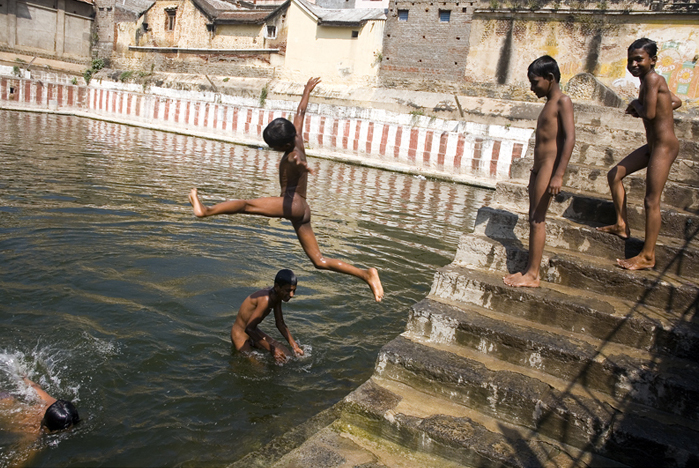




As the concept of nudity often refers more to perception by the observer than the mere description whether someone's body is covered or not, there can be a grey area, known as partial nudity. Thus, while someone exposing 'private parts' is often called 'naked' regardless of garments on other body parts, hence the terms half-naked and, a fortiori, near-naked refer to a body that is not completely exposed, but showing more than is customary or considered quite acceptable, at least in a given context. However the quantity of skin exposed is not the determining criterion, it's the "quality" that counts for perception.
Half-naked is also used for a degree of skin exposure that is not offensive (as no delicate zone is shown) but still barer than 'fully dressed', such as a man in bare torso.
As the exposure of specific, usually intimate, skin zones suffices to be offensive and/or sensual, it is not surprising that specific terms are commonly used for such cases. More specifically:
* Terms like bare balls (not to confuse with freeballs) and bollock-naked are used to explicitly emphasize the naked exposure of the most private parts, often as a dysphemism for total male nudity, even in a context where another part of the anatomy is functionally more relevant.
* Terms like bare-butt and bare-ass or kaalgat in Afrikaans (literally 'bald [arse-]hole', also an illustration that one's own dense body hair is considered to undo or at least mitigate nudity; animal furs are probably the oldest form of warm clothing) focus only on the buttocks; apart from the literal sense (which may be functional, as in the case of a spanking) this is also a popular metaphor (also in other languages) for full nudity, at the same time more explicit than most euphemisms and yet avoiding to mention the genitals.
* The term topfree or topless is sometimes used — especially in reference to females — to describe the lack of clothing covering the breasts. For men, the same state of undress, however less strategic, is called bare chested or shirtless.
* See also cleavage (breasts) and cleavage (buttocks)
* Even a term referring to an apparently less revealing skin zone can be significant in a functional context, e.g., bare-knuckle in certain martial arts, or even sometimes have strong cultural associations, as with barefoot. In the case of bare hand(s), the expression is even commonly extended as a counterpart to handling something with gloves to protect the hands, or even with a mechanical device, whether operated manually or not, allowing to keep the hands at safe distance. The naked eye is a similar figure of speech referring to human visual perception that is unaided by optic equipment.
Nudity may be indirectly exposed through reflection. This may be accidental, or accomplished deliberately by the nude person , or accomplished by a voyeur.













































